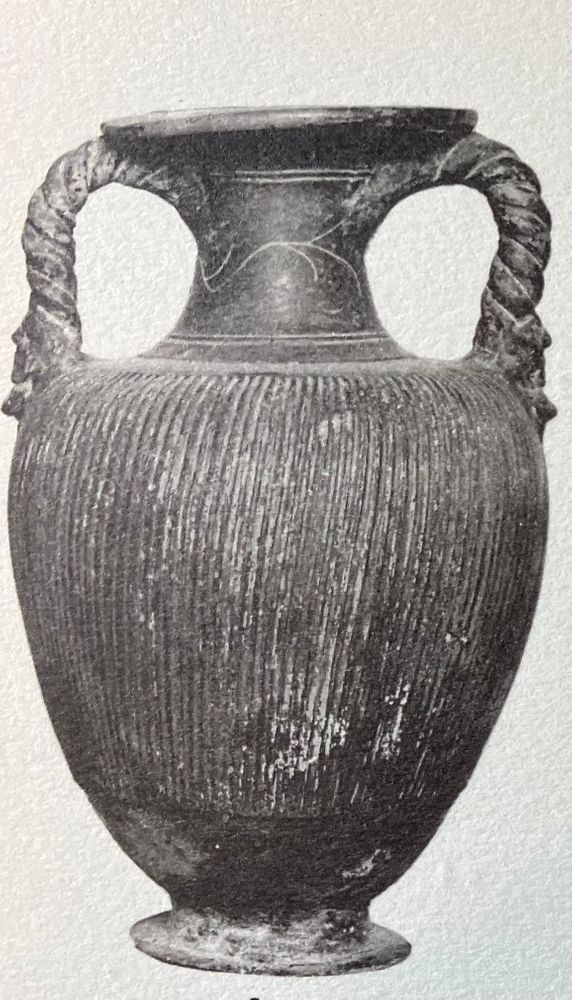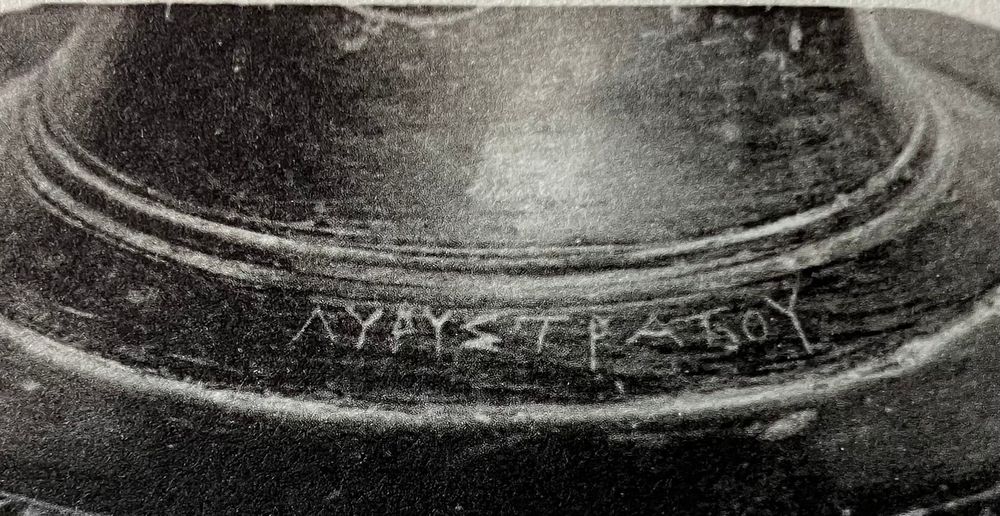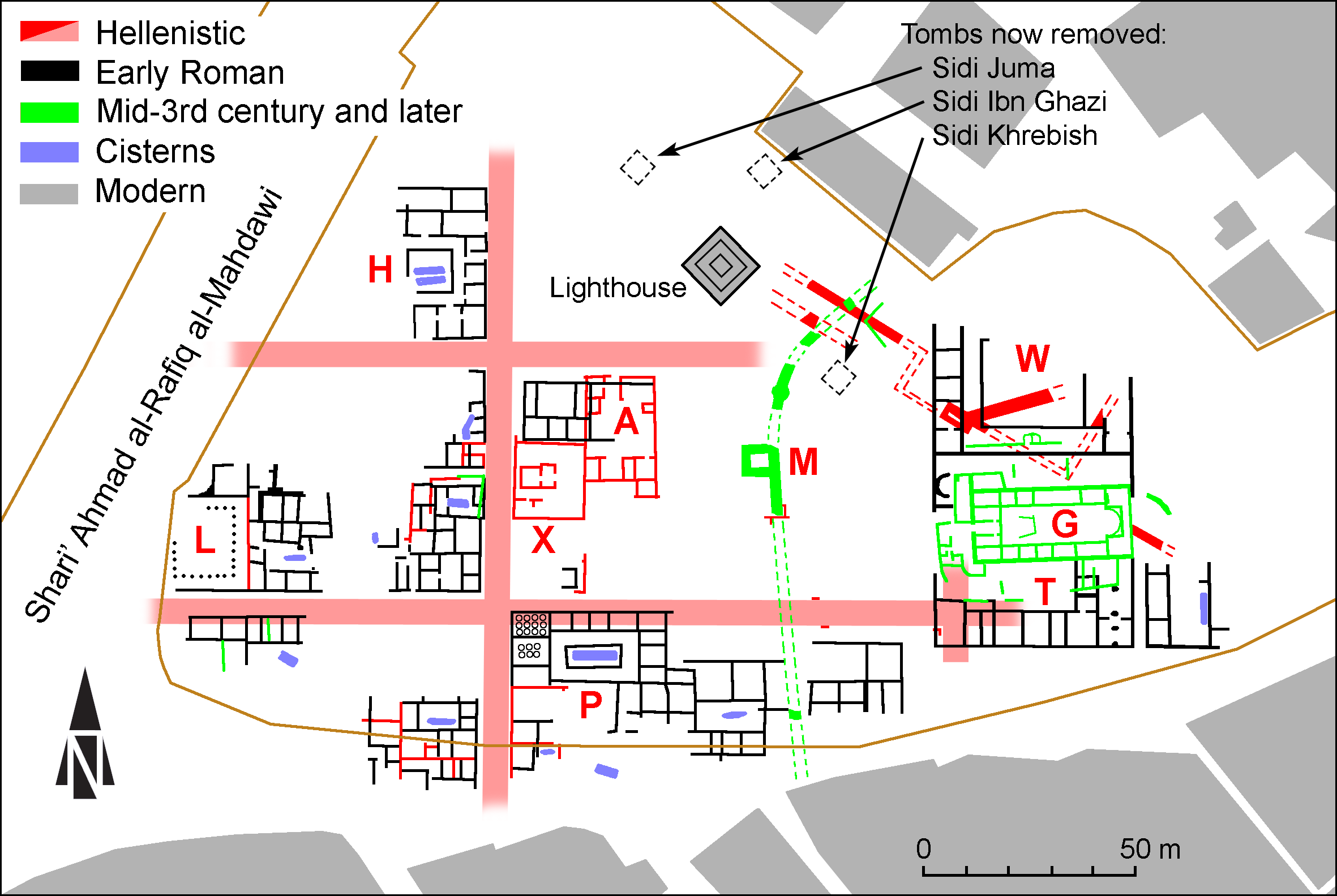EpiDoc XML:
IGCyr1394002
Trismegistos ID:
998332
Source description
Support: An amphora of black-glazed yellow clay with gadrooning on the belly (dimensions h: 0.43; 0.18 at the mouth). Both twisted handles end on the belly with a bearded man's head.
Layout: Scratched on the shoulder.
Letters: Rather carefully cut letters (height not registered); rho with small loop and long tail, slanting sigma, upsilon with long hasta (see also commentary).
Date: Third century BC (archaeological context).
Findspot: Berenike ➚: exact findspot not registered.
Place of origin: Findspot.
Last recorded location: Musée National de la Céramique, Sèvres, 9517.1. Studied by M. Massoul before 1935 at Sèvres: Musée National de la Céramique. Not seen by IGCyr team.
Text constituted from: Editor's transcription from photograph and former editor (CDL).
Bibliography
Massoul 1935, p. 47 and pl. 24, 1-3.
Text
Apparatus
1: Λυβ̣υστράτου: Λυρυστράτου Massoul 1935
French translation
(scil. Urne) de Lybystratos.
English translation
(scil. Urn) of Lybystratos.
Italian translation
(scil. Urna) di Lybystratos.
Commentary
As suggested by the first editor, we have here the name of a deceased man, whose ashes were kept in the amphora. The third letter, read by her as a rho, produces no plausible name. However, that character differs from the regular rho in the second member of this compound name in -στρατος. Its tail is not as long as the other one and what would be the loop of rho is not really circular. Moreover, it seems on the photograph that something is protruding above the line. A tantalizing reading leads to a by-form of Λιβύστρατος, which is attested on coins from Cyrene in the Hellenistic period (for an occurrence in Egypt, see Masson 1975, p. 236-237). This name is also known as Λεβύστρατος in two inscriptions (IGCyr0803002 and IGCyr0971002 a.27), from the variant Λεβύα of the country-name (see at IGCyr0167002, line 3). We would thus have here a third variant of this name. A new study of the inscription would perhaps help to secure the reading.
The only similar document known to us from Berenike is IGCyr0756002, which shows a comparable lettering. This is in agreement with the supposed date of the vase.
Creative Commons Attributions-NonCommercial 4.0 International License.
All citation, reuse or distribution of this work must contain a link back to DOI: http://doi.org/10.6092/UNIBO/IGCYRGVCYR and the filename (IGCyr000000 or GVCyr000), as well as the year of consultation.


